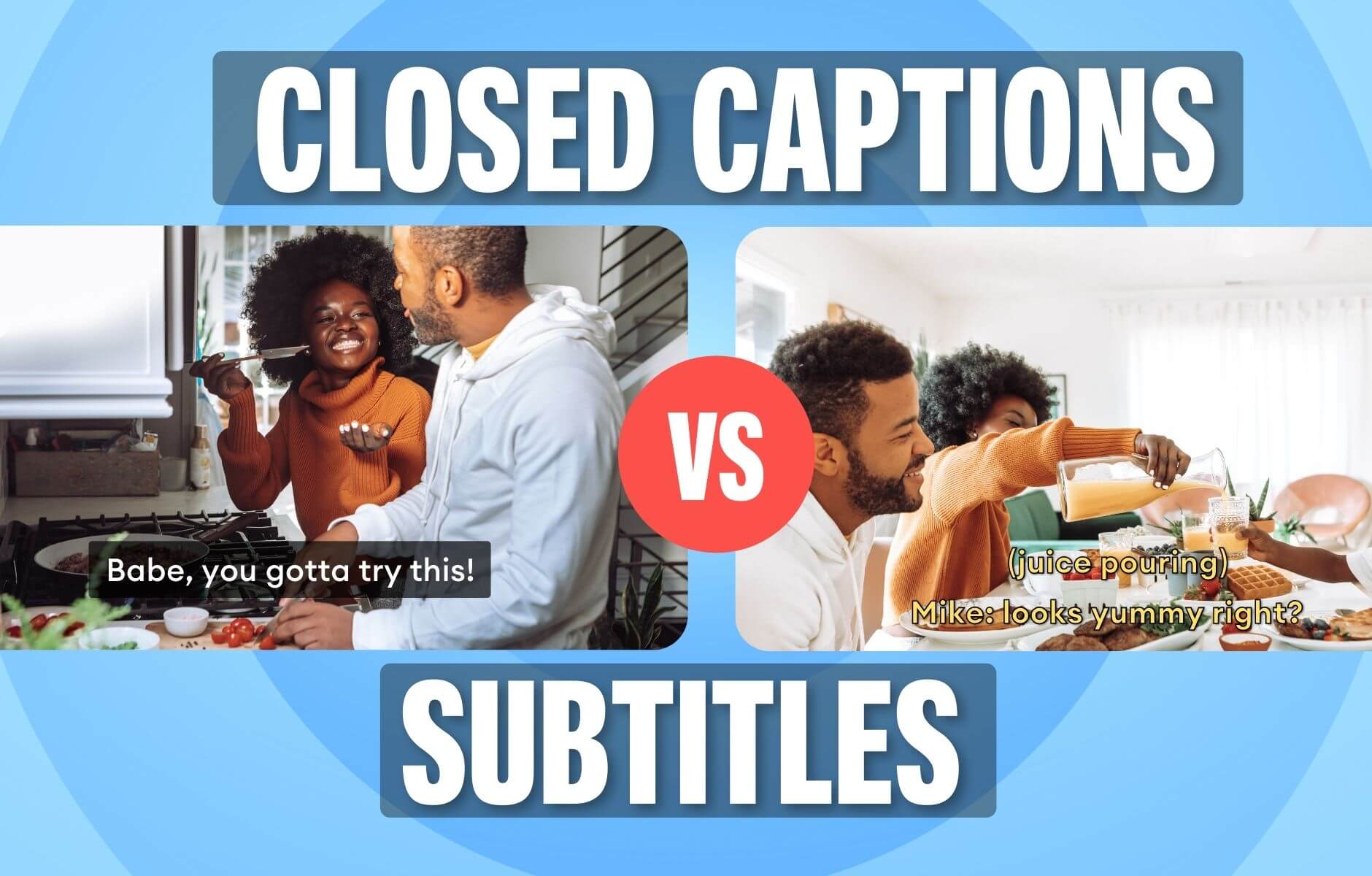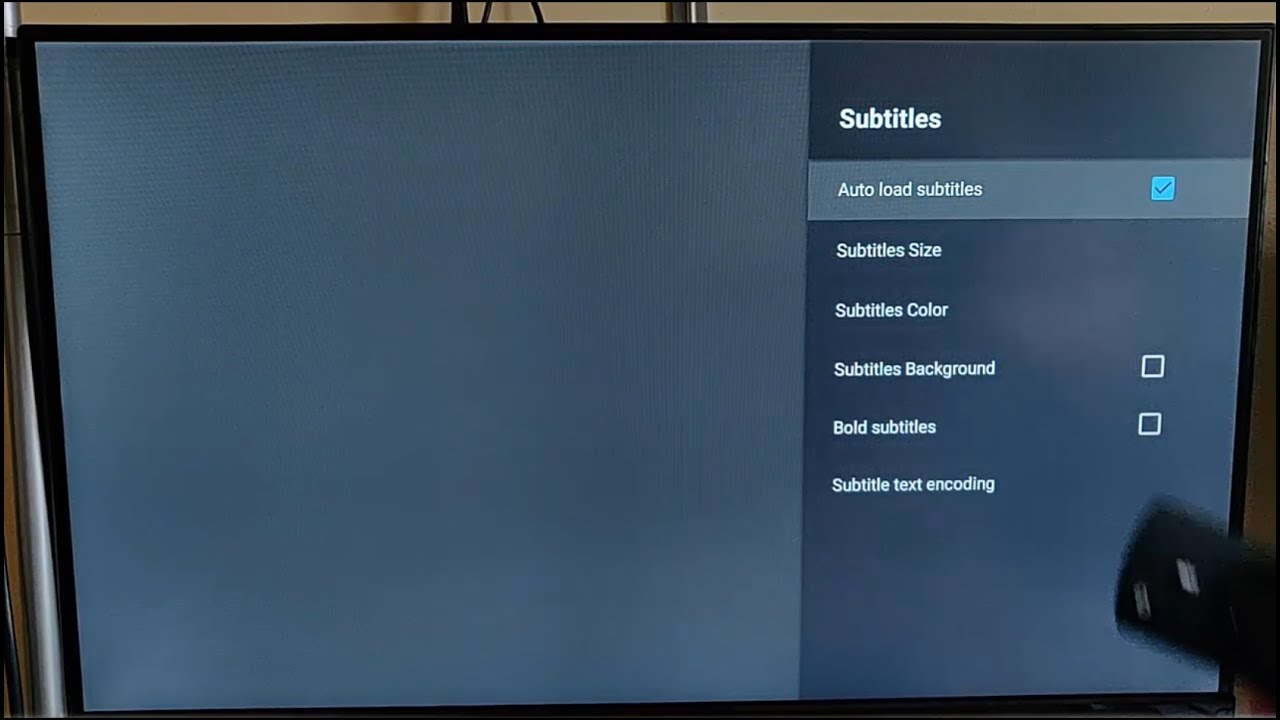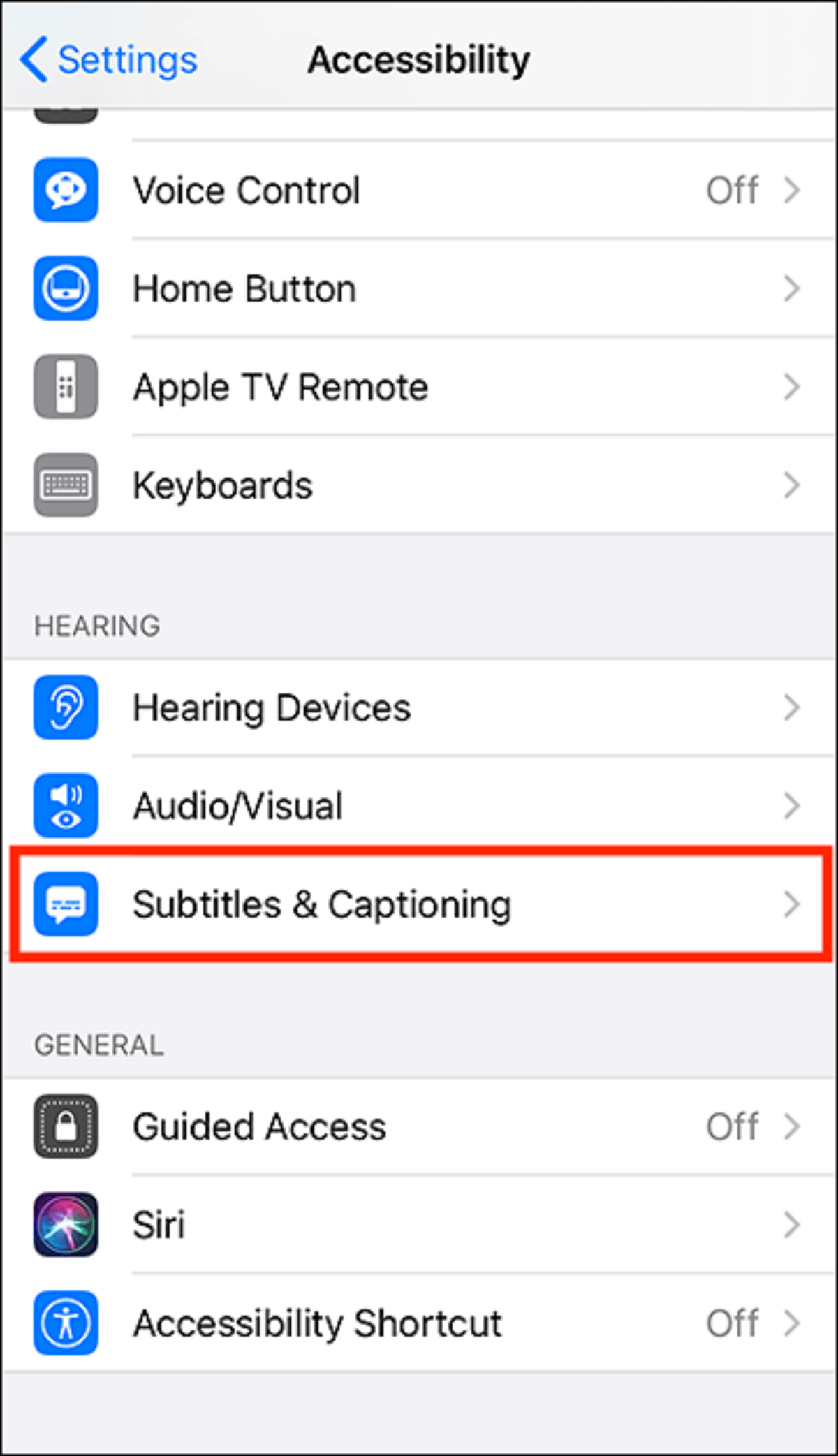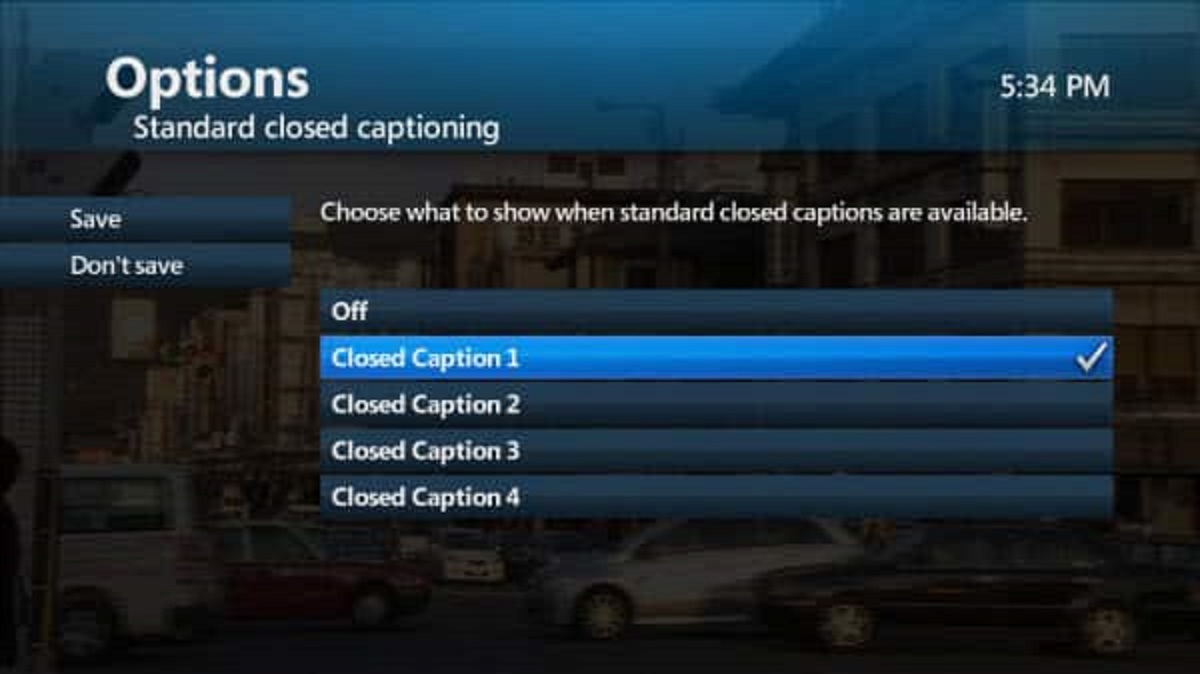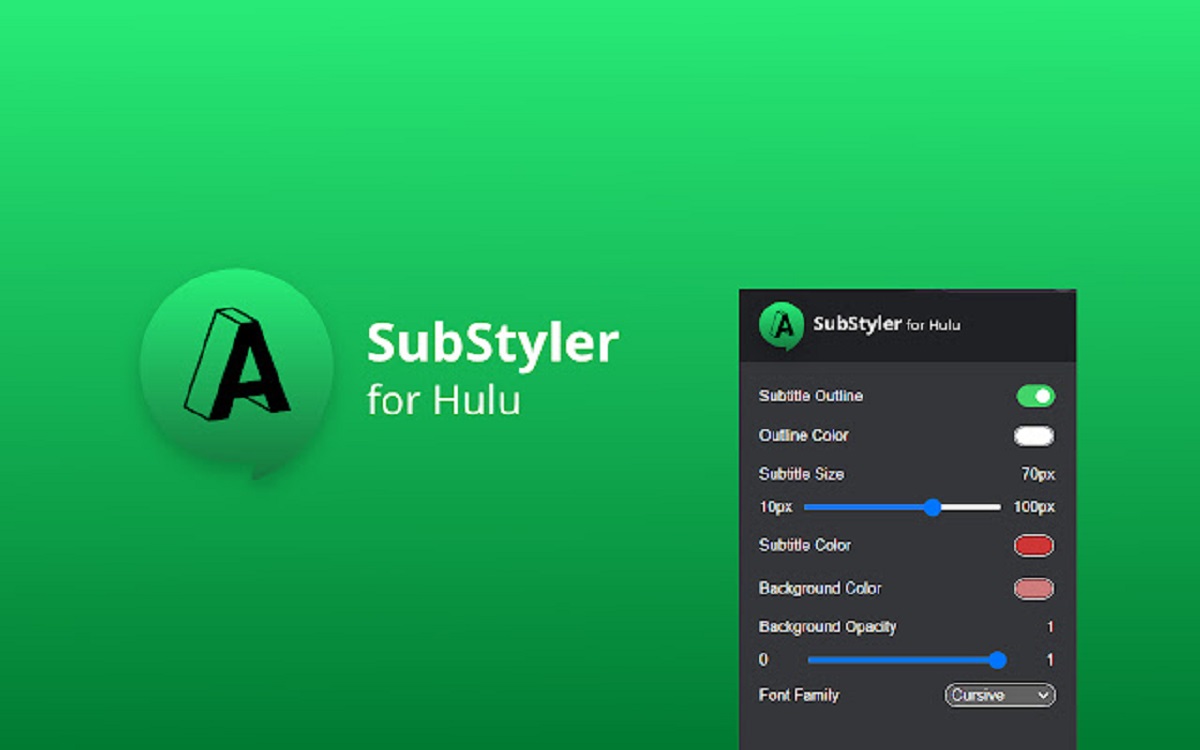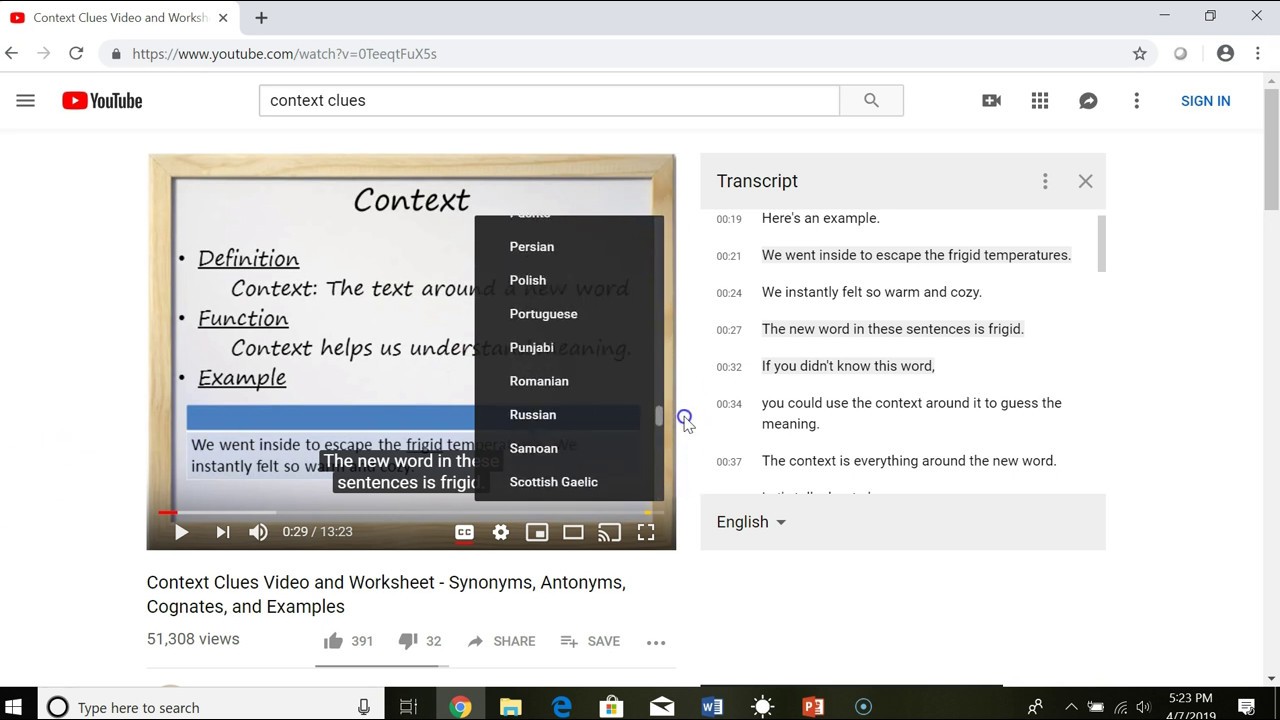Introduction
Welcome to the world of closed captions and subtitles! Whether you’ve watched a movie, TV show, or online video, you’ve likely encountered these textual elements that accompany the audiovisual content. Closed captions and subtitles play a vital role in enhancing the viewing experience for viewers around the globe.
So, what exactly are closed captions and subtitles, and what sets them apart? In this article, we will delve into the definition, differences, purpose, usage, language requirements, accessibility considerations, technology, formats, and major platforms and services that support closed captions and subtitles.
Closed captions and subtitles are both textual representations of the spoken words in audiovisual content. However, they serve different purposes and are used in different contexts. It’s important to understand these differences to fully grasp their significance in the media industry.
While closed captions primarily aim to provide a textual representation of all audio, including dialogue, sound effects, and background noises, subtitles are a translation of the dialogue, allowing non-native speakers to understand the content. Subtitles are typically used when the audio is in a language different from the viewer’s native language.
Now that we have a brief overview of closed captions and subtitles, let’s dive deeper into their definitions and explore the key differences between the two in the following sections.
Definition of Closed Captions
Closed captions (CC) are textual representations of the audio content that appear on the screen simultaneously with the video. Unlike subtitles, which are typically used for translation purposes, closed captions aim to provide a comprehensive text description of the audio for viewers who may be deaf or hard of hearing.
Closed captions include not only the dialogue but also cues for sound effects, music, and other important audio elements. They enable viewers to follow along with the content by reading the text in real-time, even if they are unable to hear the audio.
Closed captions are called “closed” because they can be turned on or off by the viewer, depending on their preferences or needs. They are usually found as a separate track within the video file or broadcast signal and can be toggled on or off using the settings on the playback device or media player.
It’s important to note that closed captions are not automatically generated. They require careful transcription and synchronization to ensure accuracy and proper timing. Professional captioning services employ skilled transcribers who capture the audio content and accurately convert it into text.
The primary purpose of closed captions is to make audiovisual content accessible to individuals who are deaf or hard of hearing. By providing a visual representation of the audio, closed captions allow these viewers to fully understand and enjoy the content. They also assist viewers in noisy environments, where the audio may be difficult to hear, or in situations where it’s necessary to watch without sound, such as libraries or public spaces.
Now that we have a clear understanding of closed captions, let’s move on to explore the definition of subtitles and understand how they differ from closed captions.
Definition of Subtitles
Subtitles are textual translations or transcriptions of the dialogue in a video or audiovisual content. They are designed to help viewers who do not understand the language spoken in the original audio to comprehend the content.
Unlike closed captions, which provide a comprehensive text description of all audio elements, subtitles primarily focus on translating the spoken dialogue. They do not usually include descriptions of sound effects, music, or other non-verbal audio cues.
Subtitles are commonly used in situations where the audience may not be familiar with the language spoken in the video. For example, a movie originally produced in French may include English subtitles to cater to an English-speaking audience. Subtitles can also be used for accessibility purposes, allowing viewers with hearing impairments to understand the dialogue along with non-English speakers.
Subtitles can be either embedded within the video file itself or provided as a separate text file that can be imported during playback. Many media players and streaming platforms offer subtitle options, allowing viewers to select the language and display format that best suits their needs.
It’s essential to distinguish between two types of subtitles: burnt-in subtitles and removable subtitles. Burnt-in subtitles are permanently embedded into the video and cannot be turned off or customized by the viewer. Removable subtitles, on the other hand, can be toggled on or off, allowing viewers to adjust their display based on preference or individual requirements.
Subtitles serve as a bridge between different languages, facilitating cross-cultural communication and enabling content to reach a global audience. They enhance accessibility, ensuring that non-native speakers can understand and appreciate audiovisual content without language barriers. Subtitles are widely used in movies, TV shows, educational videos, and online streaming platforms.
Now that we have a clear understanding of the definition of subtitles, let’s explore the key differences between closed captions and subtitles in the next section.
Key Differences between Closed Captions and Subtitles
While closed captions and subtitles both provide textual representation of audio content, they have distinct differences in terms of their purpose, usage, and target audience. Here are the key differences between closed captions and subtitles:
- Purpose: Closed captions are primarily designed to provide a comprehensive text description of all audio elements, including dialogue, sound effects, and music. They aim to make content accessible to individuals who are deaf or hard of hearing. Subtitles, on the other hand, focus on translating the spoken dialogue for viewers who do not understand the language spoken in the original audio.
- Usage: Closed captions are utilized in situations where viewers may have hearing impairments or prefer to watch content without sound. They enable individuals to follow along with the video by reading the text in real-time. Subtitles, on the other hand, are used to enable non-native speakers to understand the dialogue and enjoy the content in a language they can comprehend.
- Content: Closed captions include descriptions of all audio elements, including dialogue, sound effects, and music, to provide a complete audiovisual experience for individuals who are deaf or hard of hearing. Subtitles, on the other hand, primarily focus on translating the spoken dialogue and do not include descriptions of other non-verbal audio cues.
- Accessibility: Closed captions enhance accessibility for individuals with hearing impairments, allowing them to fully comprehend and enjoy audiovisual content. They also assist viewers in noisy environments where audio may be unclear. Subtitles bridge the language gap, enabling non-native speakers to understand the dialogue and appreciate the content in a language they are familiar with.
- Customizability: Closed captions can be turned on or off by the viewer, giving them control over whether to display the text. They can also customize captions’ appearance, size, and color based on their preferences. Subtitles, on the other hand, can be toggled on or off, but they typically cannot be customized. They are displayed in a standard format dictated by the video or media player.
Understanding these key differences between closed captions and subtitles is crucial in delivering inclusive and accessible content to a diverse audience. Now that we have explored the differences, let’s move on to discuss the purpose and usage of closed captions in the next section.
Purpose and Usage of Closed Captions
Closed captions serve a crucial role in making audiovisual content accessible to individuals who are deaf or hard of hearing. They provide a textual representation of the audio elements, including dialogue, sound effects, and music, allowing viewers to understand and appreciate the content through reading.
The primary purpose of closed captions is to ensure equal access to information and entertainment for individuals with hearing impairments. By providing a visual representation of the audio, closed captions enable these viewers to fully engage with the content, follow along with the dialogue, and not miss any crucial information conveyed through sound.
Closed captions are used across a wide range of media platforms and content types, including movies, TV shows, videos, live broadcasts, and online streaming platforms. They have become an essential feature, mandated by law in many countries, to ensure accessibility and inclusivity in the digital space.
Aside from making content accessible to individuals with hearing impairments, closed captions also benefit other audiences and situations:
- Noisy environments: Closed captions aid viewers in noisy environments where the audio may be difficult to hear or understand. Whether it’s a crowded café, a loud transportation system, or a home with background noise, viewers can still engage with the content by reading the captions.
- Non-native language comprehension: Closed captions also help non-native speakers improve their comprehension of the dialogue. By reading the captions in their native language, they can better understand the audio and fully appreciate the content.
- Language learning: Closed captions can be a valuable tool for language learners. By providing both the spoken dialogue and written text simultaneously, closed captions support language acquisition and help learners connect spoken words with their written forms.
- Enhanced content understanding: Closed captions can provide additional context and information beyond the spoken words. They can include descriptions of sound effects, speaker identifications, music lyrics, and other audio cues, enhancing the overall content understanding for all viewers.
- Compliance with legal requirements: In many jurisdictions, closed captions are legally required to be provided for certain types of content, particularly in educational, governmental, and broadcast sectors. Adhering to these regulations ensures equal access for individuals with hearing impairments.
The purpose and usage of closed captions are vital in ensuring inclusivity and accessibility in the media landscape. They play a crucial role in making audiovisual content available to all individuals, regardless of their hearing capabilities or language proficiency.
Now that we have explored the purpose and usage of closed captions, let’s move on to discuss the purpose and usage of subtitles in the next section.
Purpose and Usage of Subtitles
Subtitles serve an important role in facilitating cross-cultural communication and ensuring that content reaches a global audience. They provide a textual translation or transcription of the dialogue in a video or audiovisual content, allowing viewers who do not understand the original language to comprehend and enjoy the content.
The primary purpose of subtitles is to enable non-native speakers to understand the dialogue in a language they are familiar with. By providing a translation of the spoken words, subtitles bridge the language gap and make audiovisual content accessible to a wider audience.
Subtitles are extensively used in various media platforms, including movies, TV shows, documentaries, and online streaming services. They play a crucial role in international distribution and localization, enabling content to be enjoyed by viewers worldwide.
Here are some key purposes and usages of subtitles:
- Language Accessibility: Subtitles allow individuals who are not fluent in the original language of the content to follow along with the dialogue and understand the plot and storyline. They provide an inclusive viewing experience for non-native speakers.
- Cultural Comprehension: Subtitles often go beyond simple translations, incorporating cultural nuances and idiomatic expressions. They help viewers grasp the cultural context and subtleties of the dialogue, providing a deeper understanding of the content.
- Global Distribution: Subtitles facilitate the distribution of content to different regions and countries. They make it possible for foreign films and TV shows to gain popularity and reach a broader audience outside their native language.
- Accessibility for the Deaf and Hard of Hearing: While closed captions are the preferred option for individuals with hearing impairments, subtitles can also serve as a useful tool for them to understand the dialogue. By reading the subtitles, they can bridge the gap when closed captions are not available.
- Language Learning and Education: Subtitles can be a valuable resource for language learners, allowing them to improve their listening and reading skills simultaneously. By following along with the subtitles, learners can enhance their comprehension and vocabulary in the target language.
- Noise and Distraction Reduction: In environments where it’s necessary to watch content without sound, such as libraries or public spaces, subtitles can enable viewers to follow the dialogue and enjoy the content without causing disruption or disturbing others.
Understanding the purpose and usage of subtitles is vital in ensuring effective communication, cultural exchange, and accessibility in the media landscape. They contribute to the overall viewing experience and enable content to be enjoyed by a diverse global audience.
Now that we have explored the purpose and usage of subtitles, let’s move on to discuss the language requirements for closed captions and subtitles in the next section.
Language Requirements for Closed Captions and Subtitles
When it comes to closed captions and subtitles, language plays a significant role in ensuring effective communication and accessibility. Both closed captions and subtitles require careful consideration of language requirements to effectively convey the intended message to viewers.
For closed captions, the language requirement involves accurately transcribing and representing the audio content in text form. It encompasses capturing not only the spoken dialogue but also the various audio elements like sound effects, music, and background noises. Closed captions aim to provide a comprehensive textual representation of all audio elements, ensuring that individuals who are deaf or hard of hearing can fully understand the content.
Subtitles, on the other hand, focus primarily on translating the spoken dialogue into a different language. The language requirement for subtitles involves ensuring accurate translations and transcriptions that convey the meaning of the dialogue in the original language. Subtitles should be translated in a manner that accurately reflects the cultural nuances, idiomatic expressions, and tone of the original content.
Accuracy and synchronization are essential for both closed captions and subtitles. Closed captions should be precisely timed to appear on screen in synchronization with the corresponding audio. This ensures that viewers can follow along with the dialogue and other audio elements consistently. Similarly, subtitles should be properly timed and displayed in coordination with the audio so that viewers can read the translated dialogue at the right moment.
Language requirements can vary depending on the demographic and target audience of the content. For closed captions, it is crucial to consider the language preferences of individuals who are deaf or hard of hearing in specific regions or countries. Closed captions may need to be provided in multiple languages to accommodate a diverse audience and ensure accessibility for all viewers.
For subtitles, the language requirements depend on the target audience and the languages spoken by the intended viewers. Subtitles are typically provided in the target language(s) that are different from the original audio. It’s important to consider the linguistic needs and preferences of the target audience to ensure that the subtitles effectively serve their purpose of enabling comprehension and enjoyment of the content.
Language requirements for closed captions and subtitles extend beyond just translation or transcription. They encompass cultural sensitivity, linguistic accuracy, and proper synchronization to provide a seamless viewing experience for all viewers. Adhering to these language requirements enables effective communication, accessibility, and cultural exchange through audiovisual content.
Now that we have explored the language requirements for closed captions and subtitles, let’s move on to discuss the accessibility considerations related to these textual elements in the next section.
Accessibility Considerations for Closed Captions and Subtitles
When it comes to closed captions and subtitles, accessibility is a critical aspect to consider. Both of these textual elements play a crucial role in ensuring that audiovisual content can be enjoyed by a diverse range of viewers, including those with disabilities. Here are some accessibility considerations for closed captions and subtitles:
- Inclusion of Deaf and Hard of Hearing Viewers: Closed captions are primarily designed to make audiovisual content accessible to individuals who are deaf or hard of hearing. By providing a visual representation of the audio, closed captions enable these viewers to fully engage with the content and follow along with the dialogue. It’s important to ensure that closed captions are accurate, synchronized properly with the audio, and include all relevant audio elements for a comprehensive viewing experience.
- Subtitle Readability: Subtitles should be designed to be easily readable and legible. This includes using clear, contrasting colors for the text that stand out against the background, choosing an appropriate font size and style, and allowing sufficient time for viewers to read and process the subtitles. Proper formatting and positioning of subtitles on the screen also contribute to readability and viewer comprehension.
- Localization for Global Viewers: Subtitles provide a means of localization, allowing content to reach a global audience by providing translations of the dialogue. When creating subtitles, it’s important to consider the cultural context and nuances of the target language to ensure accurate and culturally sensitive translations. This ensures that viewers from different regions can fully understand and connect with the content.
- Compatibility with Assistive Technology: Closed captions and subtitles should be compatible with assistive technologies that individuals with disabilities may use, such as screen readers or captioning devices. Compatibility enables seamless integration and access to the textual elements for viewers who rely on such assistive devices to consume audiovisual content.
- Quality Assurance and Accuracy: Ensuring the quality and accuracy of closed captions and subtitles is essential for accessibility. Content creators and captioning/subtitling services should employ professional transcribers and translators who are proficient in the source and target languages. The captions and subtitles should undergo thorough review and editing processes to maintain high standards of accuracy and clarity.
- Compliance with Accessibility Standards: Many countries have regulations and accessibility standards in place that require closed captions and subtitles to be provided for certain types of content. It’s important to adhere to these standards to ensure equal access to information and entertainment for individuals with disabilities. Compliance includes proper captioning and subtitling practices, technical specifications, and meeting any legal requirements.
Considering these accessibility considerations when creating closed captions and subtitles ensures that individuals with disabilities can fully access and enjoy audiovisual content. It promotes inclusivity and equal opportunities for all viewers, irrespective of their hearing abilities or language limitations.
Now that we have explored the accessibility considerations for closed captions and subtitles, let’s move on to discuss the technology and formats used for these textual elements in the next section.
Technology and Formats for Closed Captions and Subtitles
The creation, delivery, and display of closed captions and subtitles rely on various technologies and formats. These technological aspects ensure the seamless integration and accessibility of textual elements within audiovisual content. Let’s explore the technology and formats commonly used for closed captions and subtitles:
- Captioning/ Subtitling Software: Specialized software is used to create closed captions and subtitles. These software tools provide features for transcribing, timing, formatting, and syncing the text with the audio. They enable captioning/subtitling professionals to efficiently generate accurate and synchronized captions/subtitles.
- Closed Captioning/Subtitling Formats: There are various file formats used for closed captions and subtitles, including SRT (SubRip), VTT (WebVTT), TTML (Timed Text Markup Language), and many more. Each format has its own syntax and specifications, but they all serve the purpose of storing and transmitting the textual information along with the audiovisual content.
- Embedded Captions/Subtitles: Content creators can embed closed captions or subtitles directly into the video file. This ensures that the text is inseparable from the video, allowing viewers to access the captions/subtitles without relying on external files or additional technology. Embedded captions/subtitles are commonly used in DVDs, Blu-rays, and some streaming platforms.
- External Caption/Subtitle Files: Closed captions and subtitles can also be delivered through separate files that accompany the video. These files can be in different formats, such as SRT or VTT, and viewers can import them into compatible media players or streaming platforms. External caption/subtitle files provide flexibility as viewers can choose whether or not to enable captions/subtitles and customize their display options.
- Streaming Platforms and Players: Many streaming platforms, video players, and media playback devices are designed to support the display of closed captions and subtitles. These platforms and players often provide options for viewers to toggle on/off captions/subtitles, select different languages, adjust the appearance and size of the text, and choose various display styles.
- Automatic Speech Recognition (ASR) Technology: ASR technology is used in some cases to automatically generate closed captions or subtitles. These systems use algorithms to transcribe the spoken words into text. While ASR technology has made significant advancements, manual review and editing are necessary to ensure accuracy and quality.
- Real-Time Captioning/Subtitling: Real-time captioning/subtitling involves providing captions or subtitles during live broadcasts or events. This is achieved through specialized equipment and trained stenographers or typists who transcribe the audio in real-time. Real-time captions/subtitles are crucial for making live content accessible to individuals with hearing impairments.
These technologies and formats work together to deliver closed captions and subtitles in a seamless and accessible manner. They enable viewers to select their preferred language, customize the display options, and access the textual elements alongside audiovisual content.
Now that we have explored the technology and formats for closed captions and subtitles, let’s move on to discuss the major platforms and services that support these textual elements.
Major Platforms and Services that Support Closed Captions and Subtitles
With the growing demand for accessibility and multilingual content, many major platforms and services have implemented support for closed captions and subtitles. These platforms and services enable content creators to provide captions and subtitles for their audiovisual content, improving accessibility and inclusivity. Let’s explore some of these major platforms and services:
- YouTube: As one of the largest video-sharing platforms, YouTube offers robust support for closed captions and subtitles. Content creators can upload caption/subtitle files or utilize YouTube’s automatic speech recognition (ASR) technology to generate captions. Viewers can enable captions, customize the appearance, and even contribute translated subtitles for global accessibility.
- Netflix: Netflix, the popular streaming platform, provides support for closed captions and subtitles in multiple languages. It offers an extensive library of content with a wide range of subtitle options. Original and licensed shows and movies on Netflix often have professionally translated subtitles to cater to global viewers.
- Amazon Prime Video: Amazon Prime Video is another major streaming platform that supports closed captions and subtitles. It allows content creators to upload subtitle files and provides subtitle options in various languages. Amazon Prime Video strives to make content accessible to diverse audiences worldwide.
- Hulu: Hulu, a popular streaming service, offers closed captions and subtitles for many of its TV shows, movies, and original content. Closed captions can be enabled or disabled based on viewer preferences, and users can also customize the appearance of the captions to enhance readability.
- Apple TV+: Apple TV+ provides closed captions and subtitles across its streaming platform. It offers captioning support in various languages for user convenience. Apple TV+ ensures that viewers can enjoy original shows and movies with accessibility options.
- Broadcast Networks: Many broadcast networks, including ABC, NBC, CBS, and BBC, provide closed captions for their TV shows and live broadcasts. TV manufacturers have integrated closed caption functionality into their devices to make them easily accessible to viewers. Broadcasters prioritize accessibility to reach a broader audience.
- Captioning/Subtitling Services: Various professional captioning and subtitling services are available to help content creators generate accurate and synchronized closed captions and subtitles. These services employ skilled transcribers and translators who work diligently to ensure high-quality captions and subtitles that meet accessibility standards.
These are just a few examples of major platforms and services that support closed captions and subtitles. Many other streaming services, video-sharing platforms, and media players also offer captioning/subtitling capabilities. As accessibility and inclusivity become increasing priorities, more platforms and services are recognizing the importance of providing closed captions and subtitles to reach diverse audiences.
Now that we have explored major platforms and services that support closed captions and subtitles, let’s conclude this article.
Conclusion
Closed captions and subtitles have revolutionized the way we consume audiovisual content, making it more accessible and inclusive. They serve distinct purposes and cater to different audience needs. Closed captions provide a comprehensive textual representation of audio elements, enabling individuals who are deaf or hard of hearing to fully engage with the content. Subtitles, on the other hand, focus on translating dialogue for non-native speakers, bridging language barriers.
Through advancements in technology and the availability of various platforms and services, closed captions and subtitles have become more prevalent. Major streaming platforms such as YouTube, Netflix, Amazon Prime Video, and Apple TV+ have implemented extensive support for closed captions and subtitles, ensuring that a wide range of content is accessible to viewers worldwide.
Considerations for language requirements, accessibility, and compatibility with assistive technologies play vital roles in the creation and delivery of closed captions and subtitles. Professional captioning and subtitling services are available to ensure accuracy, synchronization, and compliance with accessibility standards.
The integration of closed captions and subtitles enhances the viewing experience for various audiences. They enable individuals with hearing impairments to engage with content, assist non-native speakers in language comprehension, aid language learners, and provide accessibility in noisy environments.
As technology continues to advance, it is essential for content creators, platforms, and services to prioritize accessibility and inclusivity. By embracing closed captions and subtitles, the media industry can ensure that audiovisual content reaches a diverse global audience, regardless of language or hearing abilities.
In this digital age, closed captions and subtitles have become indispensable tools in fostering communication, understanding, and equal access to information and entertainment. By recognizing their importance and consistently improving their implementation, we can create a more inclusive and connected world of audiovisual content for all viewers.







